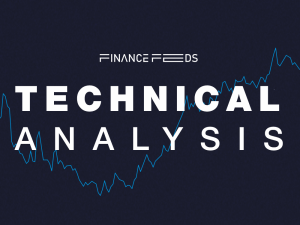What can be expected from Bitcoin as other distributed ledgers are developed? FinanceFeeds investigates
The debate over the cryptocurrency era continues while government regulators throughout the world study the coding, potential security flaws and consequences which could challenge the status quo. Some countries have explicitly allowed its use and free trade, others have banned or restricted it. BaFin, Germany’s Federal Financial Supervisory Authority, has recently released an article in order […]

The debate over the cryptocurrency era continues while government regulators throughout the world study the coding, potential security flaws and consequences which could challenge the status quo. Some countries have explicitly allowed its use and free trade, others have banned or restricted it.
BaFin, Germany’s Federal Financial Supervisory Authority, has recently released an article in order to update the public in regard to the distributed ledger technology (DLT), such as Blockchain is to Bitcoin.
“The impact on the financial industry of increased or even full-scale deployment of DLT cannot be foreseen as of yet. However, it seems that it has the potential to establish a new standard in the financial market”, said the statement, pointing to the importance of keeping an eye on the possible risks right from the start. “Data protection in transactions must e.g. be guaranteed and systems must also be protected from cyber-attacks. Adherence to regulations on anti-money laundering, governance and compliance as well as for clearing and settlement must also be ensured. The lack of a central authority on conduct and regulations could pose problems here in particular.”
Bitcoin and its distributed ledger, Blockchain, have been the center of attention from its start and we have seen some regulatory action in 2015, most notably the Winklevoss twins’ Bitcoin exchange Gemini being granted limited liability trust company charter by the New York State Department of Financial Services, gaining access to twenty six states including Washington D.C.
Regarding the price of Bitcoin (BTC), Cameron Winklevoss’ conservative forecast is a rally towards $40,000 and higher – almost a hundred times higher than today’s price – as the world dumps the cash system by 2025 (his prediction).
Expectations of a continuing bullish trend in the price of BTC are usually related to the increasing adoption of the Blockchain technology for settlement and record keeping uses, boosting demand for Bitcoin as both go hand in hand.
However, such scenario is not consensual as others might say that is a mistake to assume that a historical unit will be the same for all time. Bas Wisselink, Board Member at NXT Foundation, represents Nxt, an open source cryptocurrency and payment network that uses proof-of-stake to reach consensus for transactions and static money supply (no mining).
In an exclusive interview with Finance Feeds journalist Ricardo Esteves, Mr. Wisselink said:
“Those who remember the Eighties might remember that any desktop PC other than an IBM was labeled a “clone” with the connotation of “inferior”. At this moment we see the same thing happening with Bitcoin and “altcoins”. Exactly the same kind of system, but framed as “inferior”.
First movers are rarely, if ever; the ones that eventually get large adoption.”, wrote Mr. Wisselink, further explaining his position:
“As to alternative chains: they have the advantage of having relatively low adoption rate, so they are able to move and change much easier than Bitcoin, as well as being able to avoid many mistakes made in the Bitcoin technology.
We at NXT can go through changes much easier than for instance the block size debate in Bitcoin, by virtue of still being small. We also have opened up the concept of the Blockchain to its true power instead of limiting it to just a currency and forcing new use cases to be built by intermediaries. That’s just inefficient and wasteful, plus Bitcoin is ironically built to do away with intermediaries.”
“Nxt is an example of how a new chain can be effective, market oriented and still be based on a decentralized community. Bitcoin will certainly be around for quite a while, but if it wants to have any chance to eventually be mass adopted by existing markets, it will need to reinvent itself in quite a drastic way.
I think, looking at the stakes, this is highly unrealistic. Alternative chains, of which I expect there to be many that will warrant adoption, including Nxt, eventually will have a much higher chance of survival”, he concluded.
Meanwhile, big corporations including JP Morgan, Wells Fargo, State Street, IBM, Intel, and Cisco, are joining forces to create their own DLTs. The R3 CEV Blockchain consortium has concluded its most recent and biggest trial, a Blockchain-based trading system with 40 banks. Five distributed ledgers were used besides of Bitcoin’s Blockchain (Ethereum, Chain, Eris Industries, IBM and Intel), simulating three kinds of transactions: issuing, trading and redeeming commercial paper.









